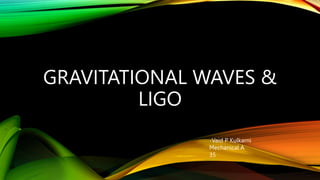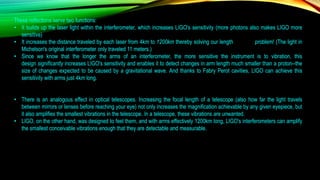Einstein predicted gravitational waves in 1916 in his theory of general relativity. Gravitational waves are ripples in spacetime caused by massive accelerating objects like neutron stars or black holes. In 1974, astronomers discovered a binary pulsar system that confirmed gravitational waves exist indirectly. On September 14, 2015, the LIGO experiment directly detected gravitational waves from colliding black holes, the first direct observation of gravitational waves.































